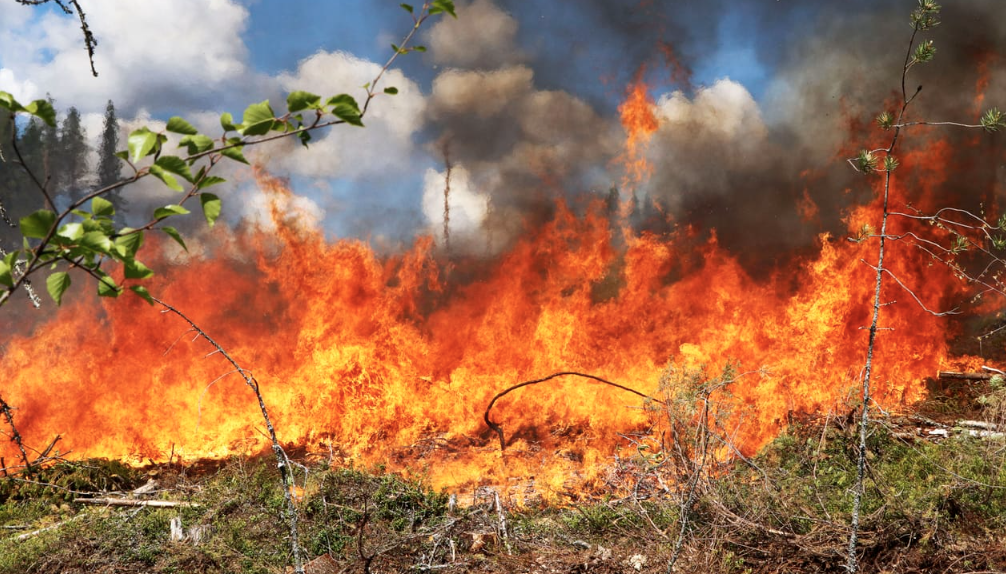You can’t fight fire with fire – right? So you may think and it’s a statement which 99 % of people believe in. But ask Wagner Dodge – he will surely give you a shocking example of the opposite. Fighting fire with fire saved his life!
Let’s get back to his forest fire case, which is beautifully described in Gary Klein’s book Seeing What Others Don’t: The Remarkable Ways We Gain Insights (2013) , where Klein analyzes over 120 real-world case studies to explain discontinuous discoveries—sudden shifts in understanding that lead to breakthroughs. Here is a shortened story of Mann Gulch forest fire*, Montana on August 5, 1949, when Wagner Dodge found a way to escape and save his life:
A team of fifteen smokejumpers parachuted into western Montana that afternoon to control a forest fire. Wagner Dodge was leading the group, with whom he was supposed to go through a three-week training course, but at the last minute he was reassigned to a maintenance task with the group in Mann Gulch – sometimes a destiny is cruel….Routine task turning to a death trap. Less than two hours later, twelve of the smokejumpers lay dead or dying after being trapped by a blowup—a sudden and unexpected firestorm resulting from a collision of fire and winds.
A blowup to a typical forest fire is like a hurricane to an ocean storm. Dodge could see the beginnings of a fire way down below, near the river. Dodge knew that this fire was going to come roaring up the north slope of the valley where he and his team were located. It would likely kill them all. Dodge ordered his team to run for safety back to the top of the hill. However, when he looked back, he realized they wouldn’t make it. The fire was gaining on them and was picking up speed. Unfortunately, the fire picks up speed. As the valley gets steeper, the fire can move faster but the legs of the smokejumpers have to work harder. At its fastest the fire is traveling about 660 feet a minute.
Wagner Dodge survived through creative desperation—an ingenious, counterintuitive tactic, but most members of the team died. To escape the fire, he lit a fire in front of him, knowing that his escape fire would race uphill and he could take refuge in its ashes. He wet his handkerchief from his canteen and put it over his mouth and nose, then dived facedown into the ashes of the escape fire to isolate himself from any flammable vegetation. He was saved with less than a minute to spare.
But he could not persuade anyone to join him in the ashes. None of the others could make sense of what he was doing, maybe because they missed the training they were supposed to have and then the ‘routine task’ changed the plans! Dodge had invented a new tactic, but he never had a chance to describe it to his crew. As one of the two survivors put it, upon seeing Dodge light a fire, “we thought he must have gone nuts.” Wagner Dodge probably thought that he can’t reach the rocky areas on the ridge before the fire will catch him. But maybe he can do something to the last anchor, to the fuel. How can he neutralize the fuel? Of course! He can burn it! Fire, his enemy, can also be his friend. He lights the escape fire to race up the slope ahead of him, and he dives into the hot ashes, his sanctuary from the blowup. This is his escape plan. And it worked!
How can he neutralize the fuel? Of course! He can burn it! Fire, his enemy, can also be his friend.
I love Klein’s approach and wrote a blog Insight – the Core Element of Serendipity in 2014 straight after reading his book, below is a short clip from the blog:
….creative desperation might be the joker, when properly understood it will give the otherwise abundant strategic element to our understanding of serendipity.
The idea for creative desperation will surely be easier to adapt by purpose-driven managers than a vague Walpolean serendipity elevator pitch: “What if we try to find something which we are not in quest of??
*Gary Klein, Seeing What Others Don’t: The Remarkable Ways We Gain Insights (2013) pp. 80-85, also academically studied from organisational sensemaking perspective, (however overlooking the role of missed three weeks training!) Karl Weick, The Collapse of Sensemaking in Organizations: The Mann Gulch Disaster (1993)





